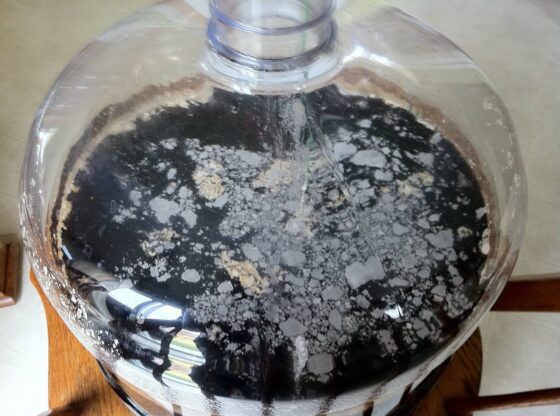
By Hendre’ Barnard, Training and Marketing Manager
Distillique Beverage (Pty) Ltd.
https://distillique.co.za
Click <Here> to see more of Hendre’s articles.
Bacterial and mould Infections are unfortunate but not uncommon occurrences in fermentations, specifically grain, potato and other starch related fermentations.
How do I know if I have a Bacterial Infection in my Fermentation?
You can quite quickly spot a Bacterial Infection in your fermentation by the colour change – the fermentation first going grey, then darker grey and finally black or a beautiful silky white “web” will form on top of the fermentation. The “white” growth can be scooped off and the fermentation continued without ill effect. However, “dark” infections have a detrimental effect on the actual progress of the fermentation, and it will also lead to extremely unpleasant flavours and aromas, and such a fermentation cannot be salvaged and will have to be discarded.
Why are some Fermentations more susceptible to Bacterial Infections?
The reason grain, potato and other starch related fermentations are more susceptible to bacterial infections than for instance fruit fermentations, is due to the pH level of the fermentation. If you refer to our Article regarding Successful Fermentations, you will see that grain (and other starch) fermentations, proceed best at a pH of between 5.5 and 6.5, which is pretty close to a neutral pH of 7.
Fruit fermentations on the other hand; prefer a pH of between 3.5 and 4.5, making them much more acidic than starch fermentations. This acidity gives fruit fermentations a natural protection against bacterial infection.
How do we prevent Bacterial Infections in Fermentations?
The only protection against bacterial infection in our fermentations is sterilization and hygienic operations.
The first form of sterilization is achieved by temperature. During the boiling of fruit (to release more sugar) and the boiling of a starch mash to release the Carbohydrates for gelatinization and starch conversion, both mashes are heated above 65 degrees Celsius – the temperature point above which many bacteria are killed. This alone is enough for fruit, and after cooling down the inherent acidity of the fruit will take care of any post boiling bacterial exposure.
When doing a starch conversion however, we find ourselves boiling a mash, then cooling it down in stages (depending on the conversion method used). It is during these phases that we run the risk of reinfection by bacteria, and we therefore need to ensure that everything that comes into contact with our mash is sterilized. This includes, but is not limited to, agitators, spoons, cooling coils, fermentation vessels, airlocks, sparging or filtering equipment, etc. Also do not forget your hands.
One of the easiest, most affordable and most effective sterilizers to use is a product called Iodophor. It is food-safe, meaning it does not transfer any colour, taste or aroma to the products that come into contact with it, and cannot poison an individual that uses those products if used correctly.
How do I use Chemical Sterilizers?
If using Iodophor concentrate, when mixed with water, it produces a large amount of sterilizing agent with a dark orange colour – dosage is about 15ml per 20lt of water. As long as the liquid retains colour, progressively lightening to a pale yellow, it will serve its function, therefore it should not be used and discarded (if possible) as this would be a waste. Objects to sterilize can be dunked, soaked, rinsed and then decanted.
Now what is important to remember when using sterilizing agents is that the magic words are CONTACT TIME. The longer the agent is in contact with the object being sterilized, the better it will work. You should therefore not wait until the last minute to sterilize, but rather do so in advance. You should also NEVER rinse, dry, wipe or in any other way discard excess sterilizing agent clinging to the sterilized object. Its presence is a good thing, and it will sterilize for as long as it is in contact with the object. Also remember that wiping a sterilized object with an unsterilized cloth or hand afterwards defeats the purpose as it reintroduces bacteria to the object.
Hopefully this information will help you avoid disappointment in your fermentations.
Keep on Distilling!


